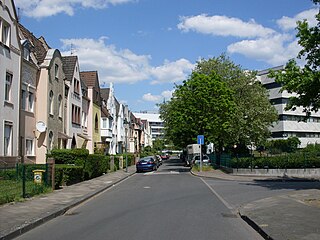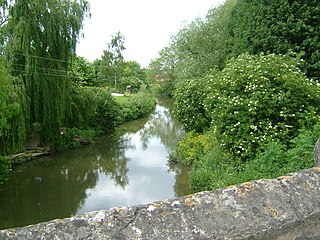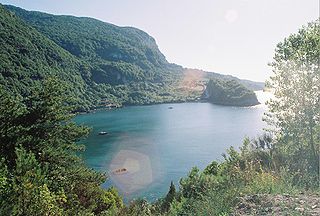
Elberfeld is a municipal subdivision of the German city of Wuppertal; it was an independent town until 1929.

Hürth is a town in the Rhein-Erft-Kreis, North Rhine-Westphalia, Germany. Hürth shares borders with the city of Cologne.

The Marsi were a small Germanic tribe settled between the Rhine, Ruhr and Lippe rivers in northwest Germany. It has been suggested that they were a part of the Sugambri who managed to stay east of the Rhine after most Sugambri had been moved from this area. Strabo describes the Marsi as an example of a Germanic tribe who were originally from the Rhine area, now the war-torn Roman frontier, but had migrated deep into Germania.

Hagen-Hohenlimburg, on the Lenne river, is a borough of the city of Hagen in North Rhine-Westphalia, Germany.

Wąchock(listen) is a town in Starachowice County, Świętokrzyskie Voivodeship, Poland, near Starachowice, within the historical region of Lesser Poland. In 2006, it had 2,777 inhabitants.
Bilk, Oberbilk and Unterbilk are parts of Düsseldorf and together with Hamm, Flehe and Volmerswerth they constitute City District 3, which is the most populated district of Düsseldorf with 105,281 inhabitants. The renowned Heinrich-Heine-University is located in Bilk.

Southern Jutland is the name for the region south of the Kongeå in Jutland, Denmark and north of the Eider (river) in Schleswig-Holstein, Germany. The region north of the Kongeå is called Nørrejylland, 'Northern Jutland'. Both territories had their own ting assemblies in the Middle Ages. Southern Jutland is mentioned for the first time in the Knýtlinga saga.

Himmelgeist is an old part of Düsseldorf, which is dominated by agriculture until today. Himmelgeist lies by the river Rhine, neighbouring to Flehe and Itter.

Holthausen is an urban borough of Düsseldorf. It is located south of Oberbilk, west of Reisholz, north of Benrath and east of Itter and Himmelgeist. A natural border is the river Rhine.

The Loose Stream sometimes called the River Loose or Langley Stream is a tributary of the River Medway notable for the number of watermills that it powered in its short length. It rises in Langley, flows through Boughton Monchelsea, Loose and enters the Medway at Tovil. The river valley is deep sided, and there is much evidence of the paper and wool trades which once flourished here: the stream has been dammed in many places, resulting in many mill ponds.

The River Teise is a tributary of the River Medway in Kent, England.

The River Beult is a tributary of the River Medway in South East England.
The Medway and its tributaries and sub-tributaries have been used for over 1,150 years as a source of power. There are over two hundred sites where the use of water power is known. These uses included corn milling, fulling, paper making, iron smelting, pumping water, making gunpowder, vegetable oil extraction, and electricity generation. Today, there is just one watermill working for trade. Those that remain have mostly been converted. Such conversions include a garage, dwellings, restaurants, museums and a wedding venue. Some watermills are mere derelict shells, lower walls or lesser remains. Of the majority, there is nothing to be seen. A large number of tributaries feed into the River Medway. The tributaries that powered watermills will be described in the order that they feed in. The mills are described in oder from source to mouth. Left bank and right bank are referred to as though the reader is facing downstream. This article covers the tributaries that feed in above Penshurst.
The Medway and its tributaries and sub-tributaries have been used for over 1,150 years as a source of power. There are over two hundred sites where the use of water power is known. These uses included corn milling, fulling, paper making, iron smelting, pumping water, making gunpowder, vegetable oil extraction, and electricity generation. Today, there is just one watermill working for trade. Those that remain have mostly been converted. Such conversions include a garage, dwellings, restaurants, museums and a wedding venue. Some watermills are mere derelict shells, lower walls or lesser remains. Of the majority, there is nothing to be seen. A large number of tributaries feed into the River Medway. The tributaries that powered watermills will be described in the order that they feed in. The mills are described in order from source to mouth. Left bank and right bank are referred to as though the reader is facing downstream. This article covers the watermills on the tributaries that feed in below Penshurst and above Yalding.
The formerly independent community of Großenenglis has been since its amalgamation with Borken in 1974 with its population then of 1,190 the northernmost and largest by land area (988 ha) of Borken's constituent communities.
The formerly independent municipality of Singlis merged with Borken in 1974 at which time its population was 880. It lies within the county of Schwalm-Eder-Kreis in Hesse, Germany.
Gombeth is a constituent community of Borken and had its first documentary mention in 857 as "Gumbetta die Marka". Once an independent community, it was amalgamated with Borken in 1974. Gombeth is surrounded on all sides by former open-pit brown coal mines, being found to the south, towards Singlis, and towards Borken. The pit east of Gombeth was filled in by PreussenElektra as part of the renaturation programme.
Lendorf is a constituent community of Borken and had its first documentary mention in 1221 as "Lintdorf". Once an independent community, it has now been amalgamated with Borken since 1971. Lendorf has about 400 inhabitants.

The Fürstenberg China Factory was founded on 11 January 1747 in Fürstenberg, on the Weser river, by Johann Georg von Langen at the direction of Duke Charles I of Brunswick-Wolfenbüttel. It is the second oldest porcelain manufacturer in Germany that still operates on its original site.

Cytorus was an ancient Greek city on the northern coast of Asia Minor. Mentioned by Homer, Cytorus survives in the name of Gideros, which is both














